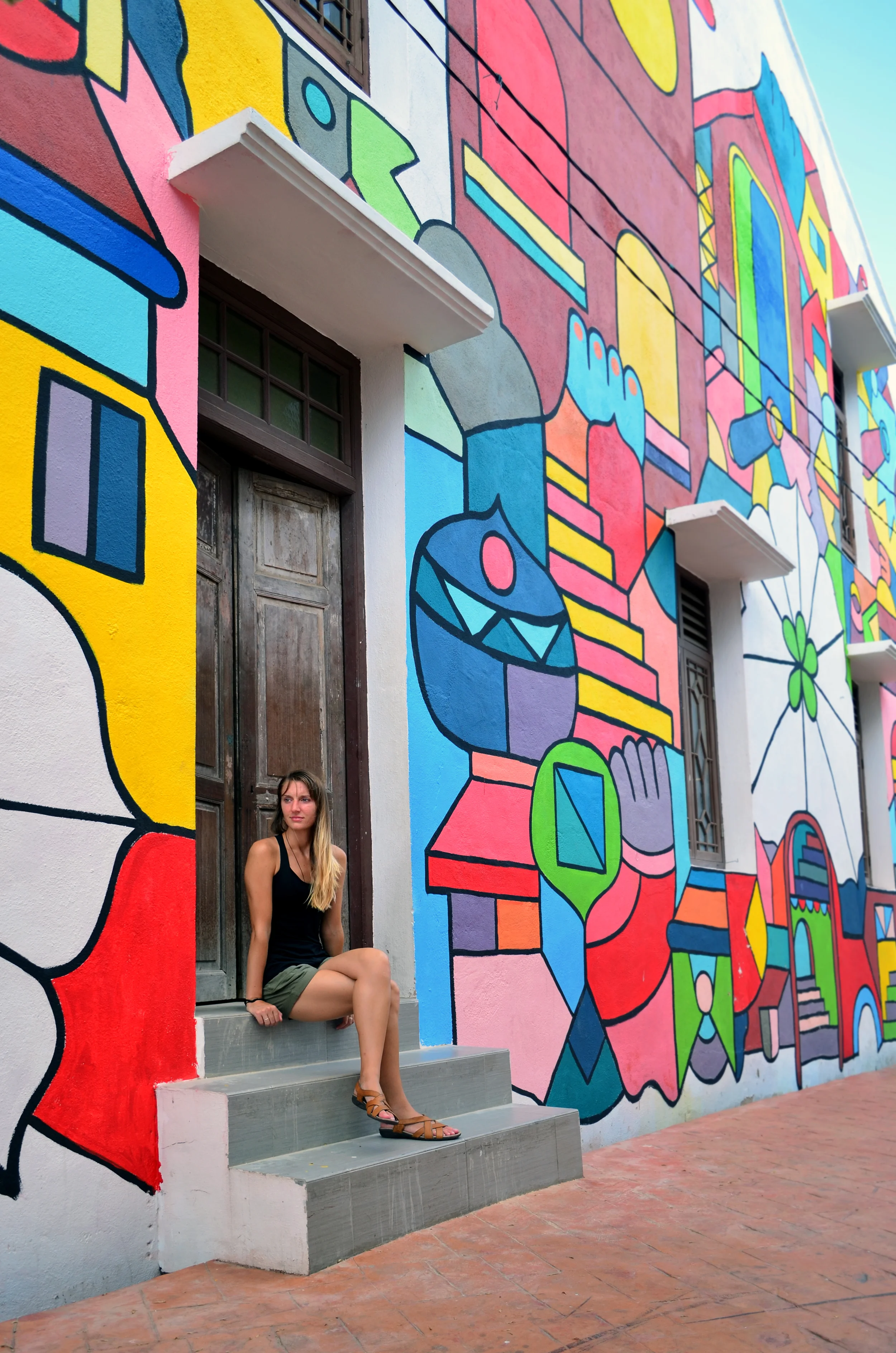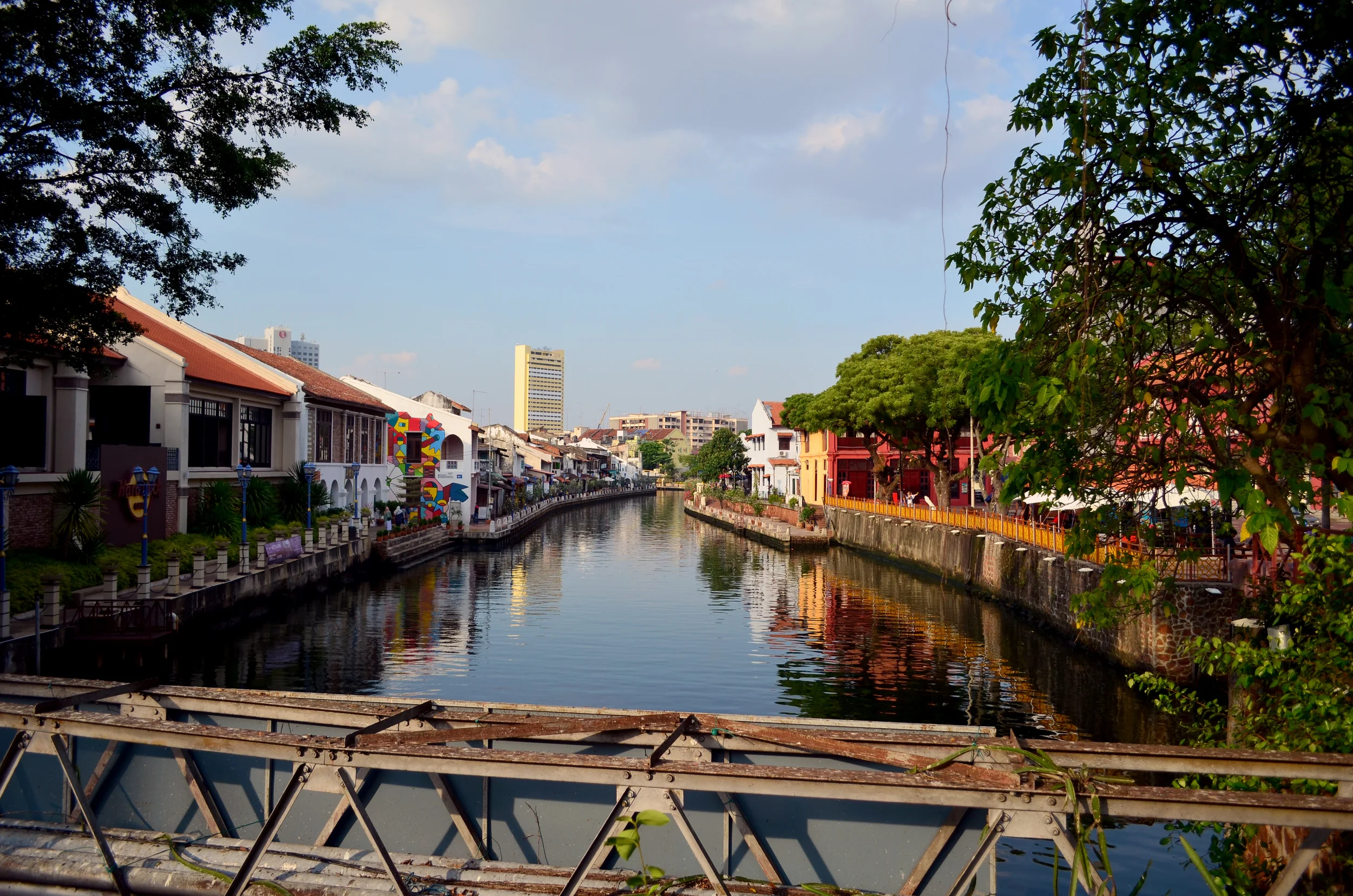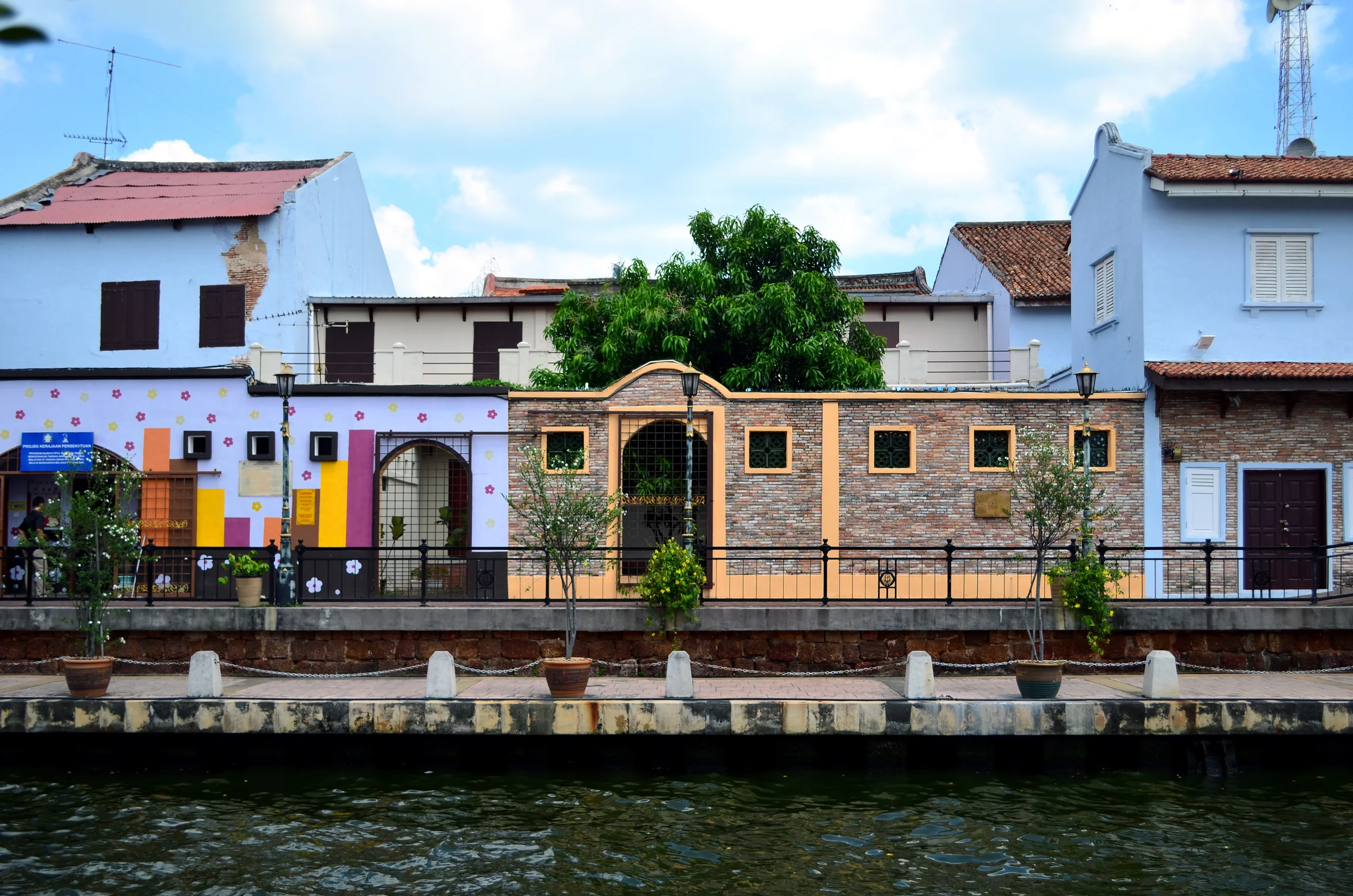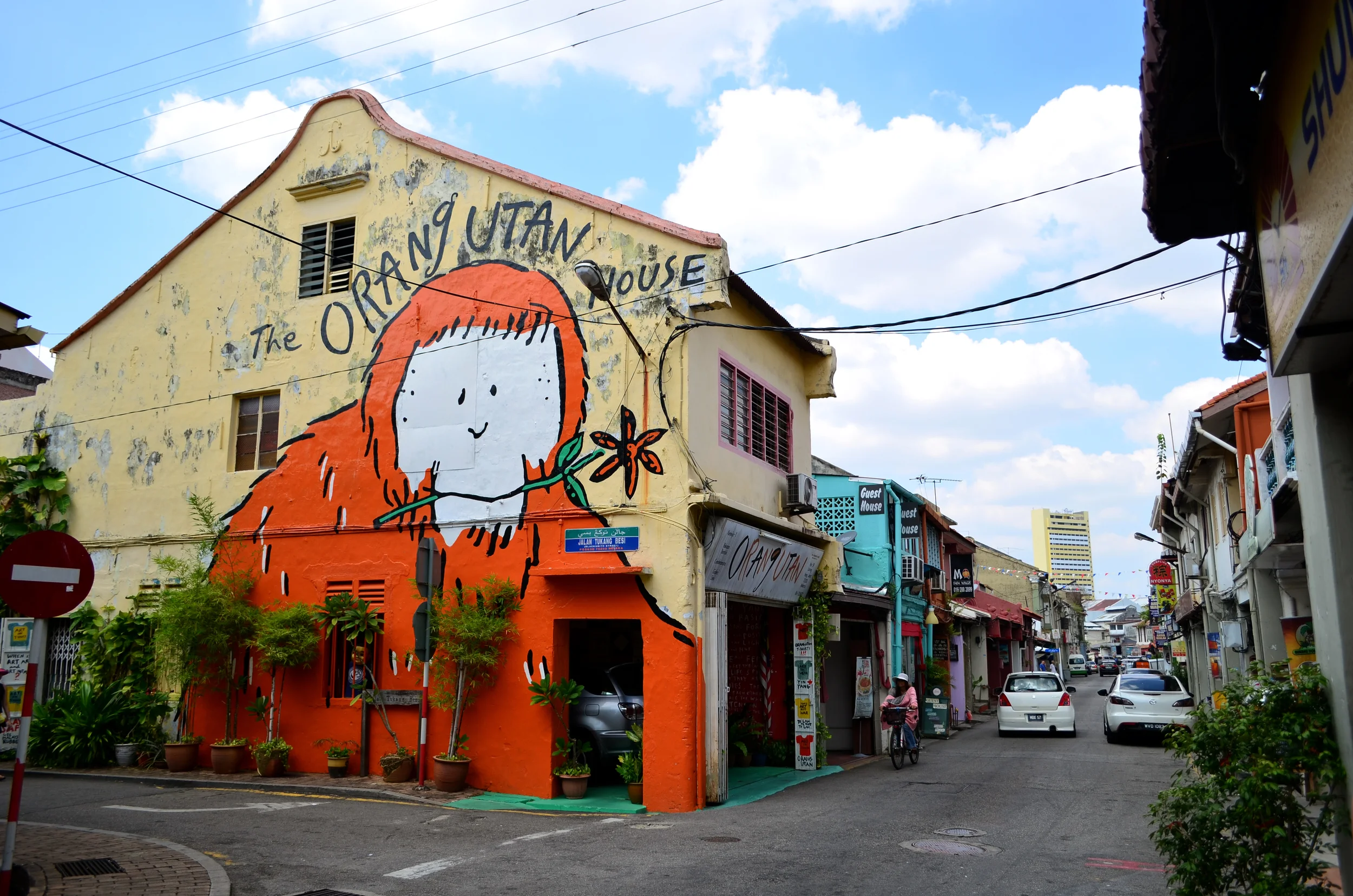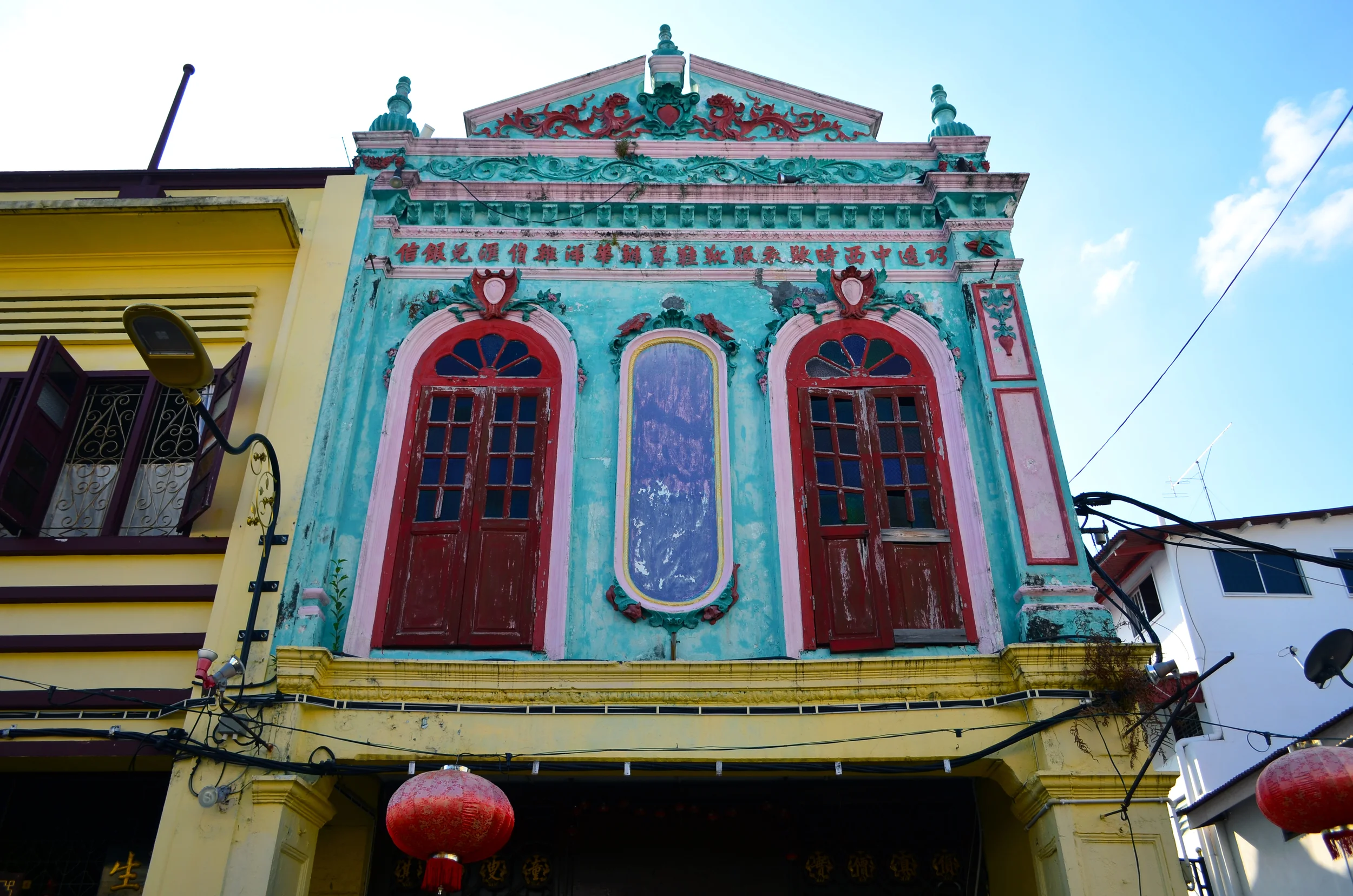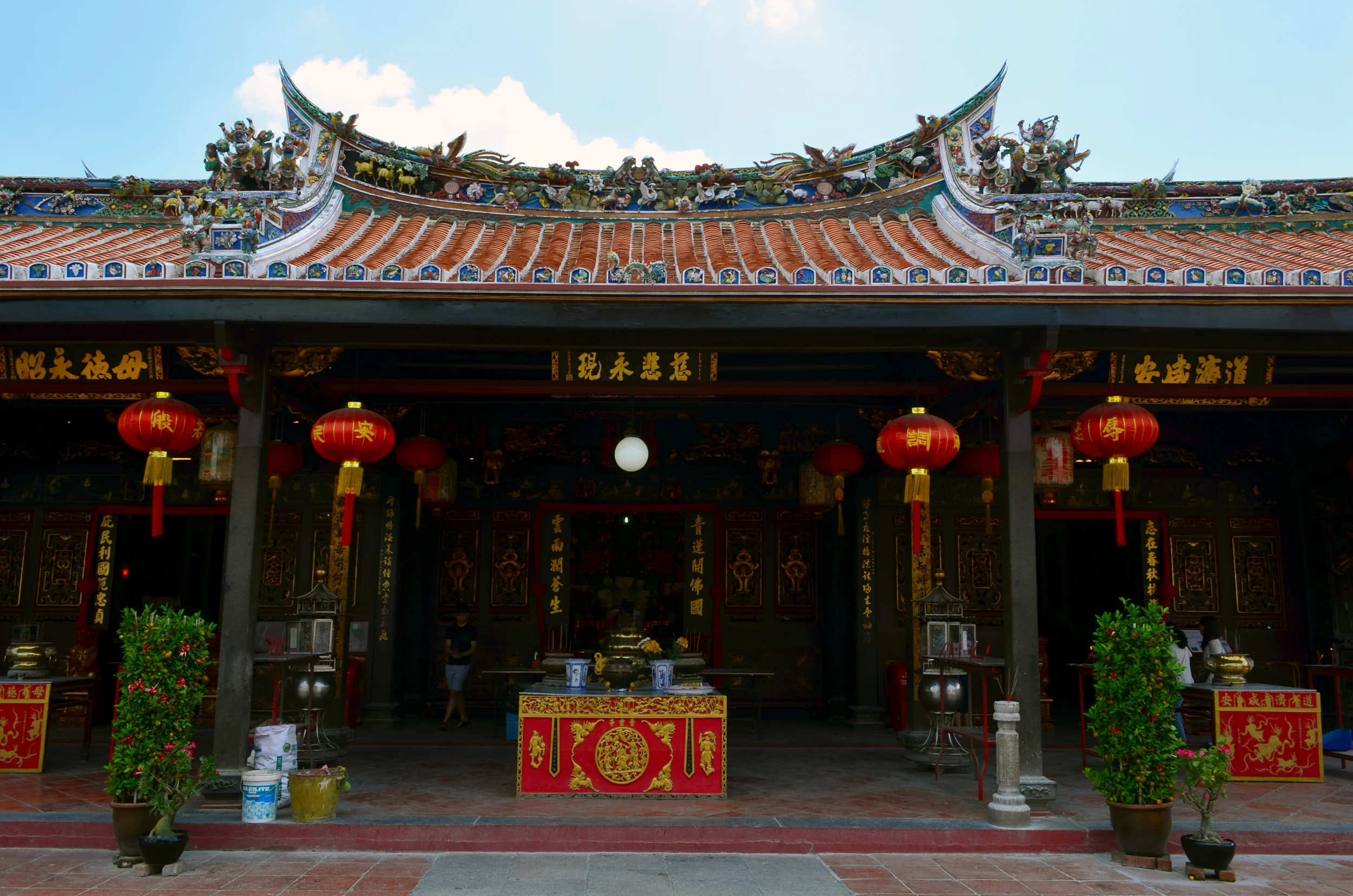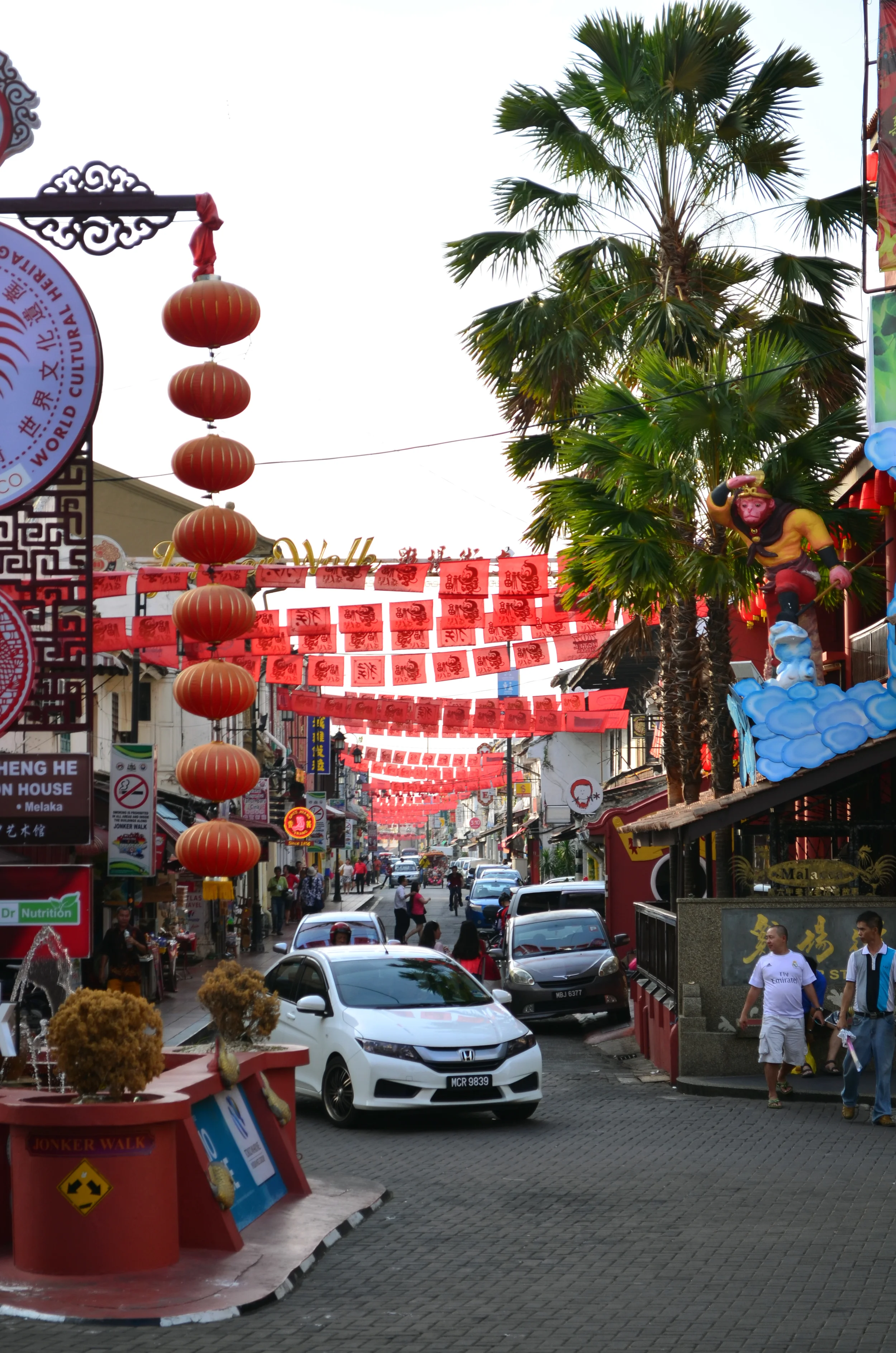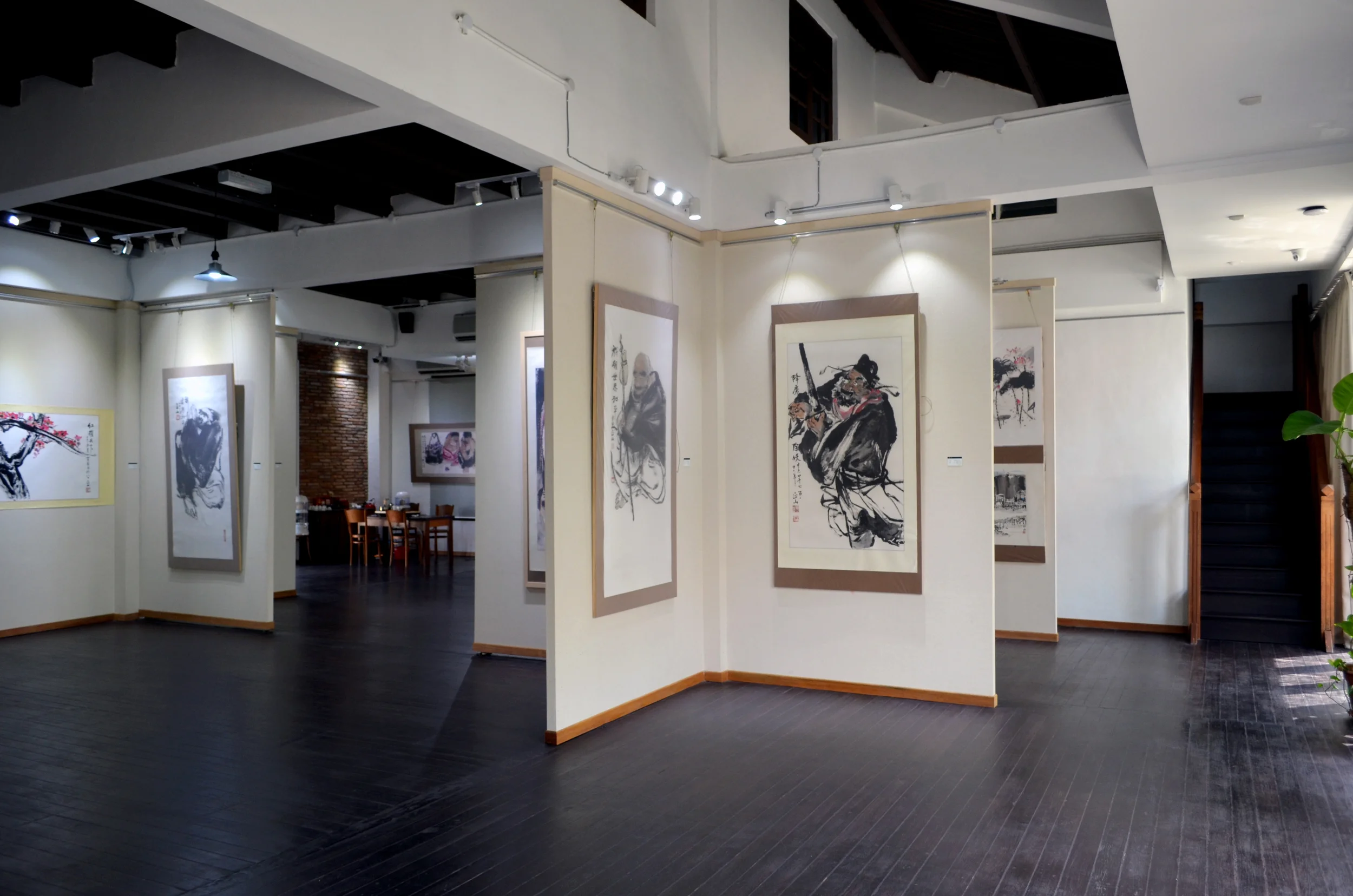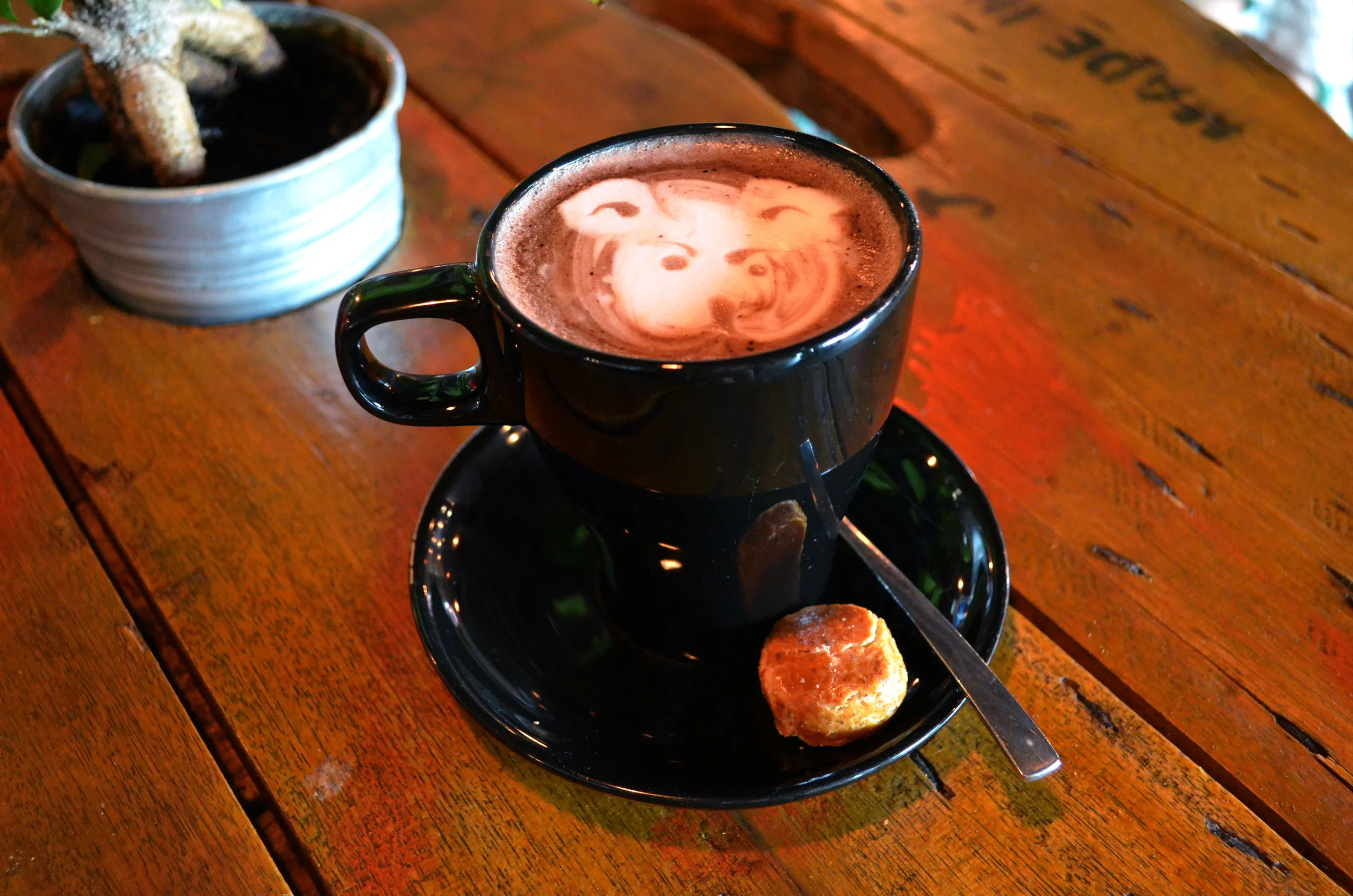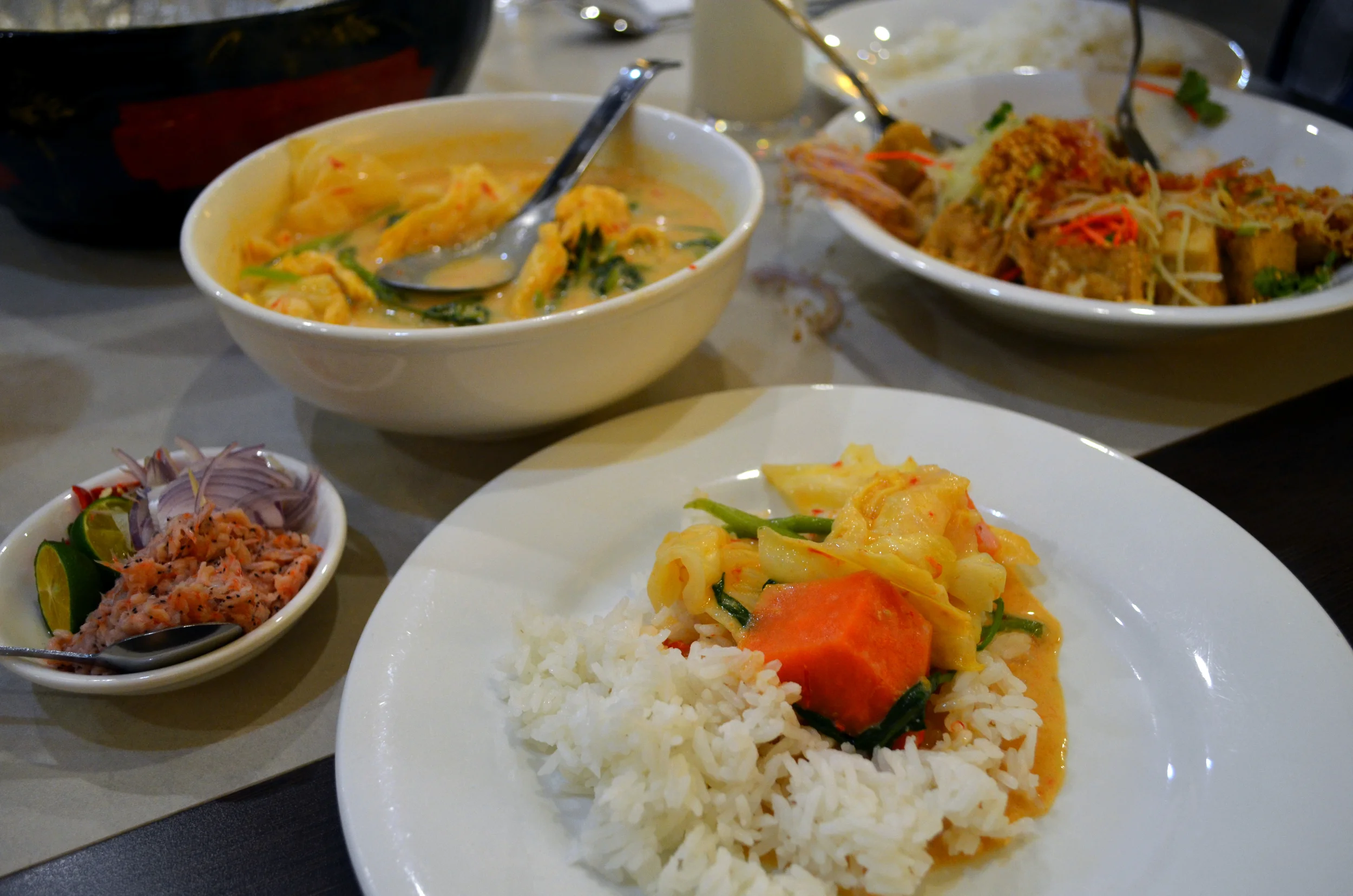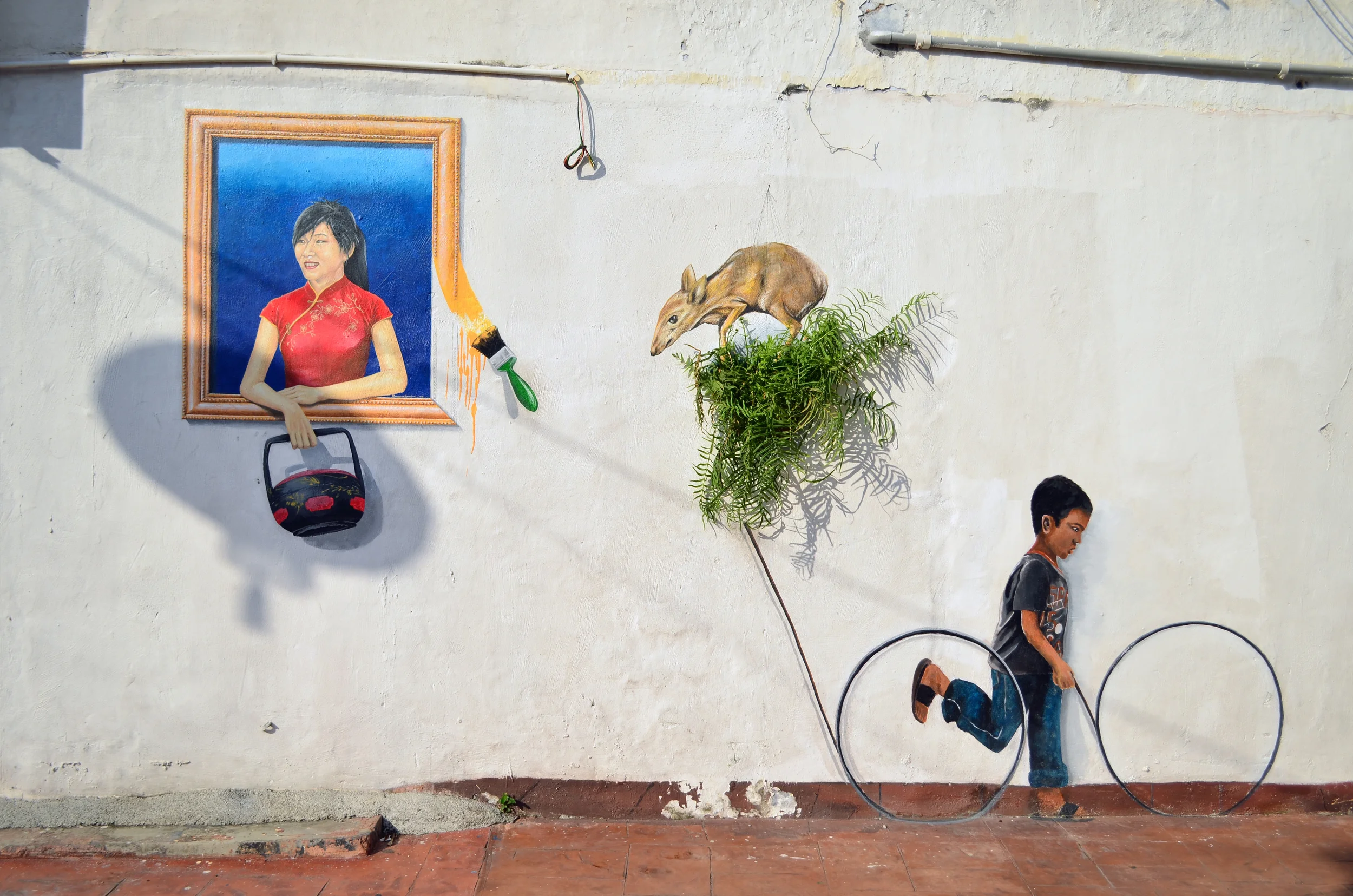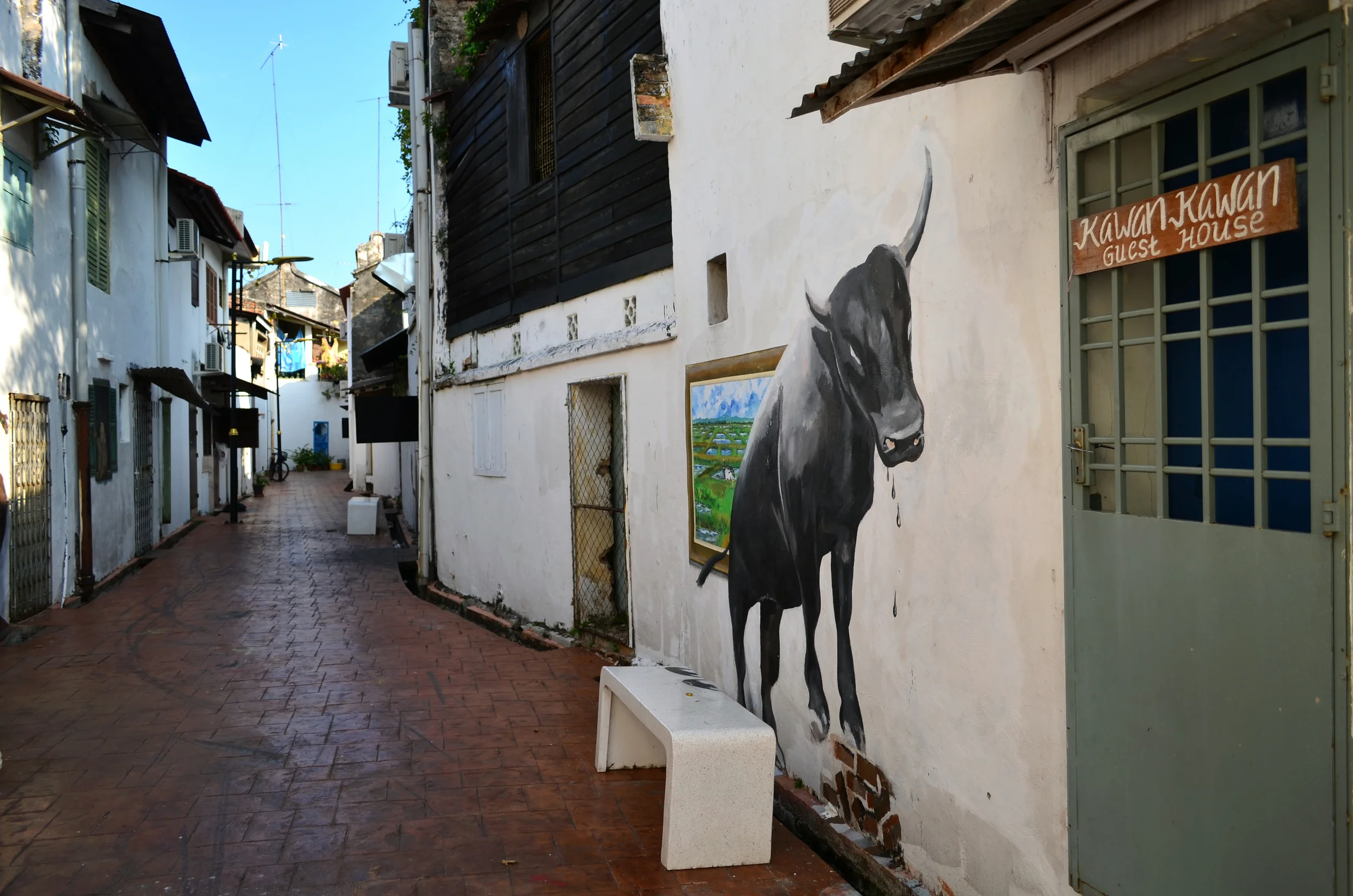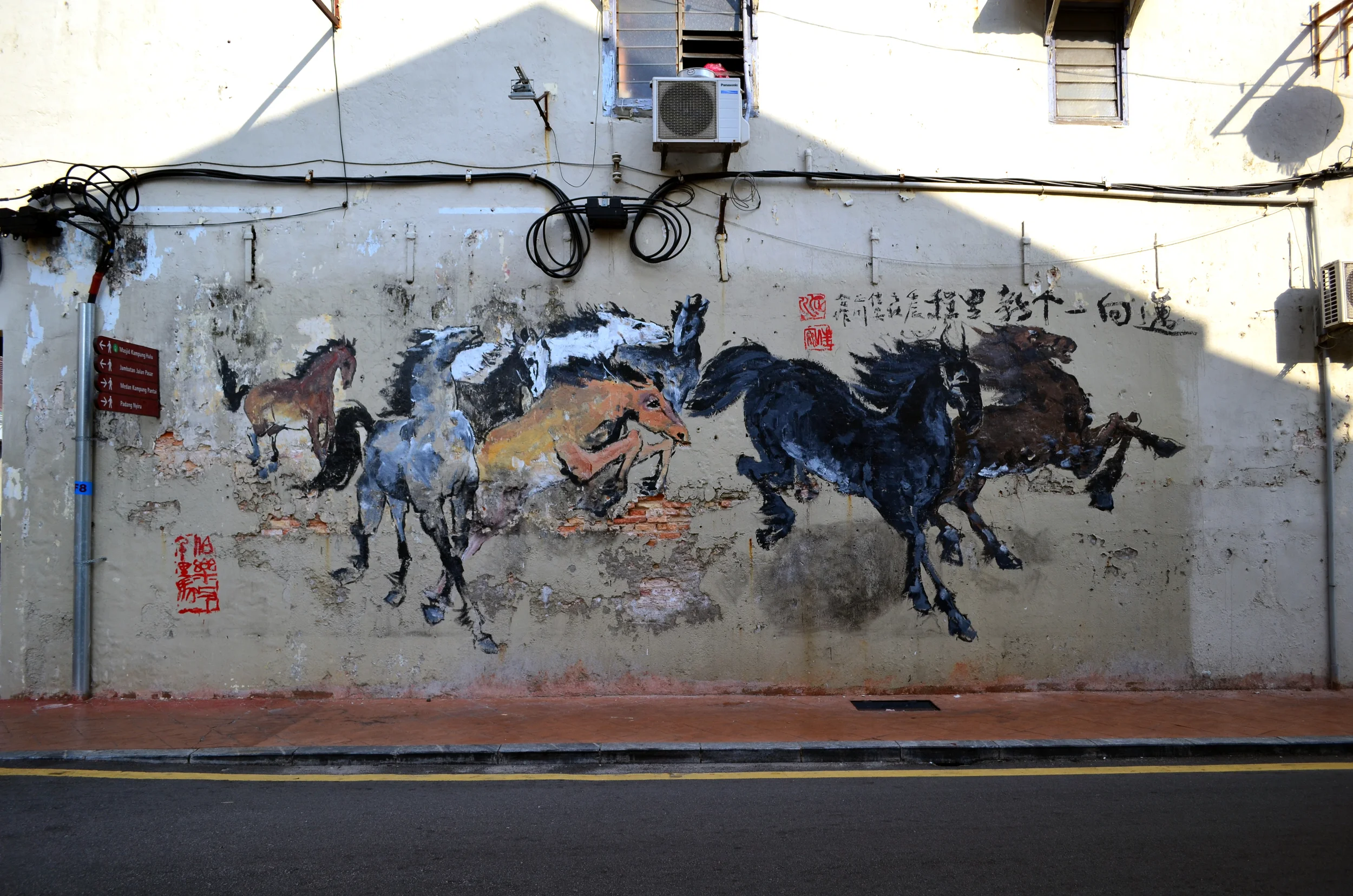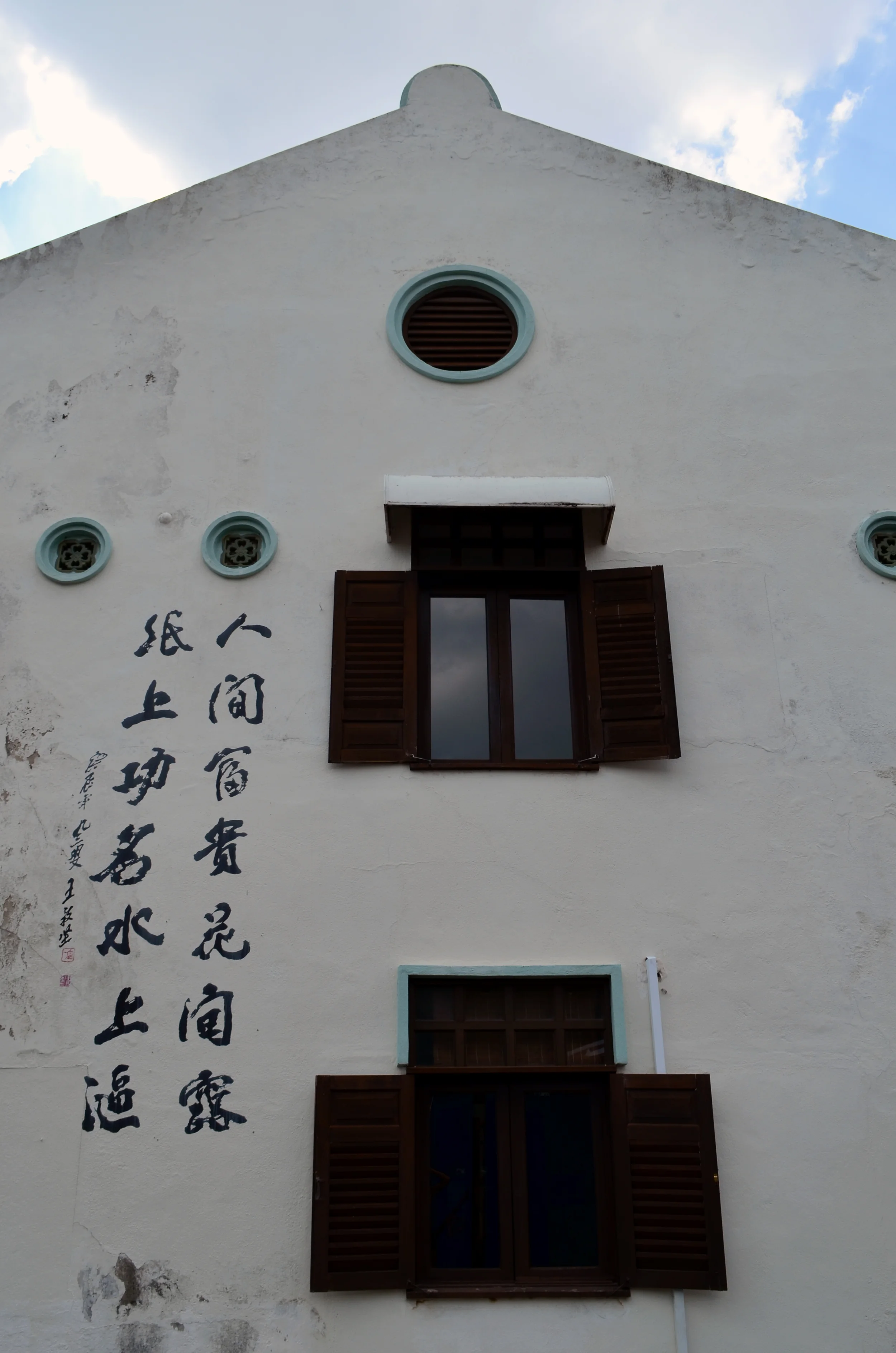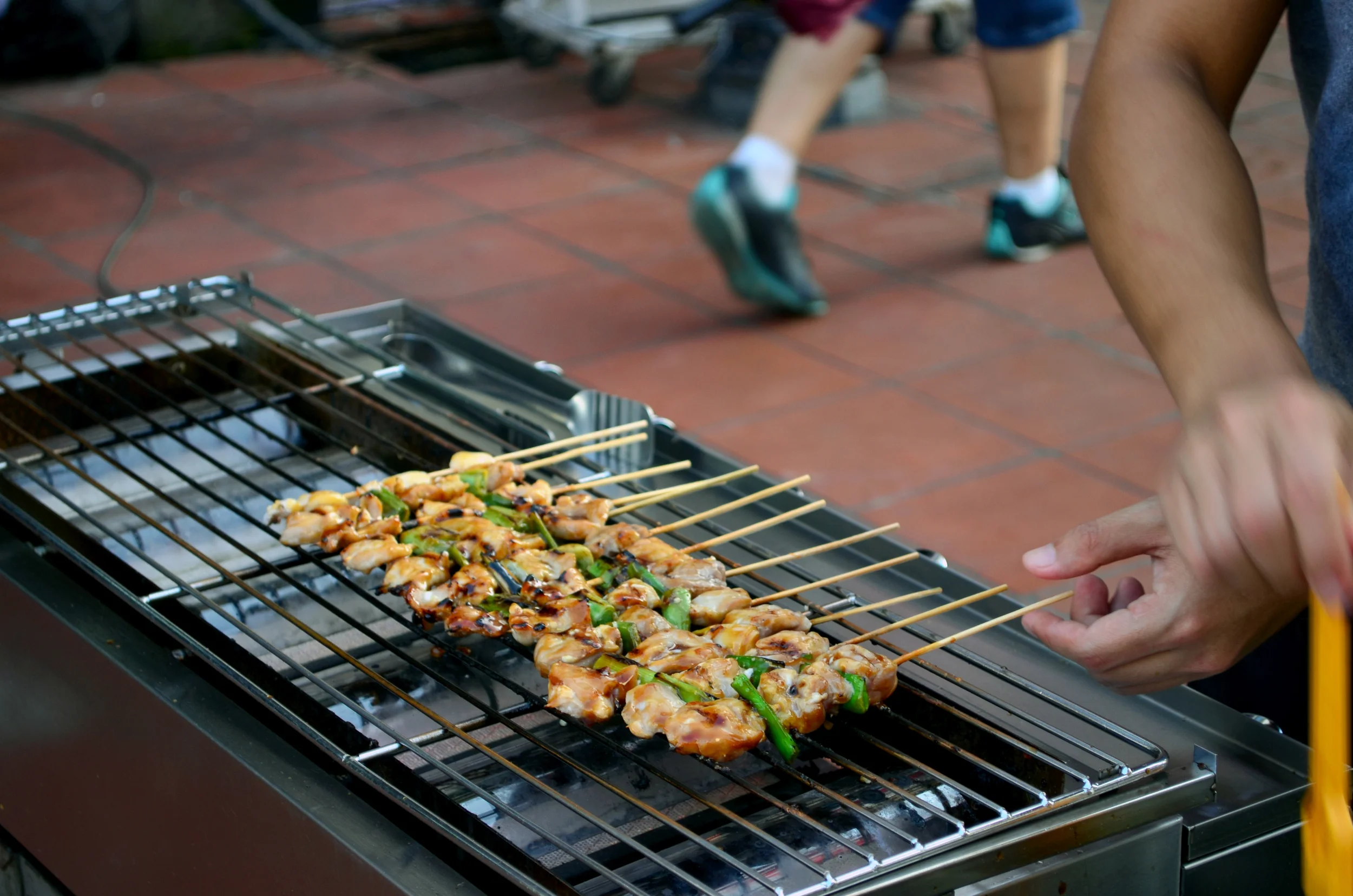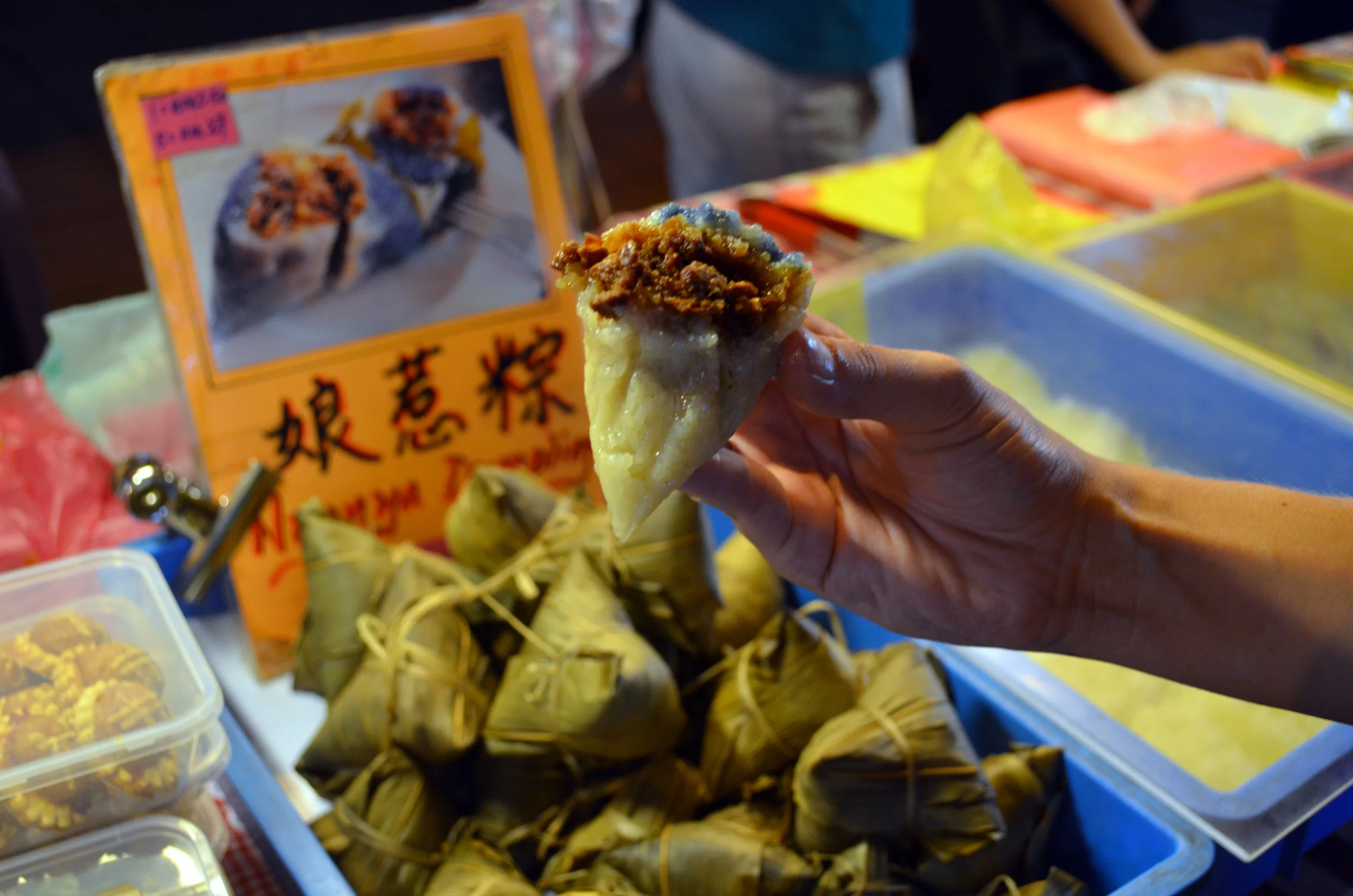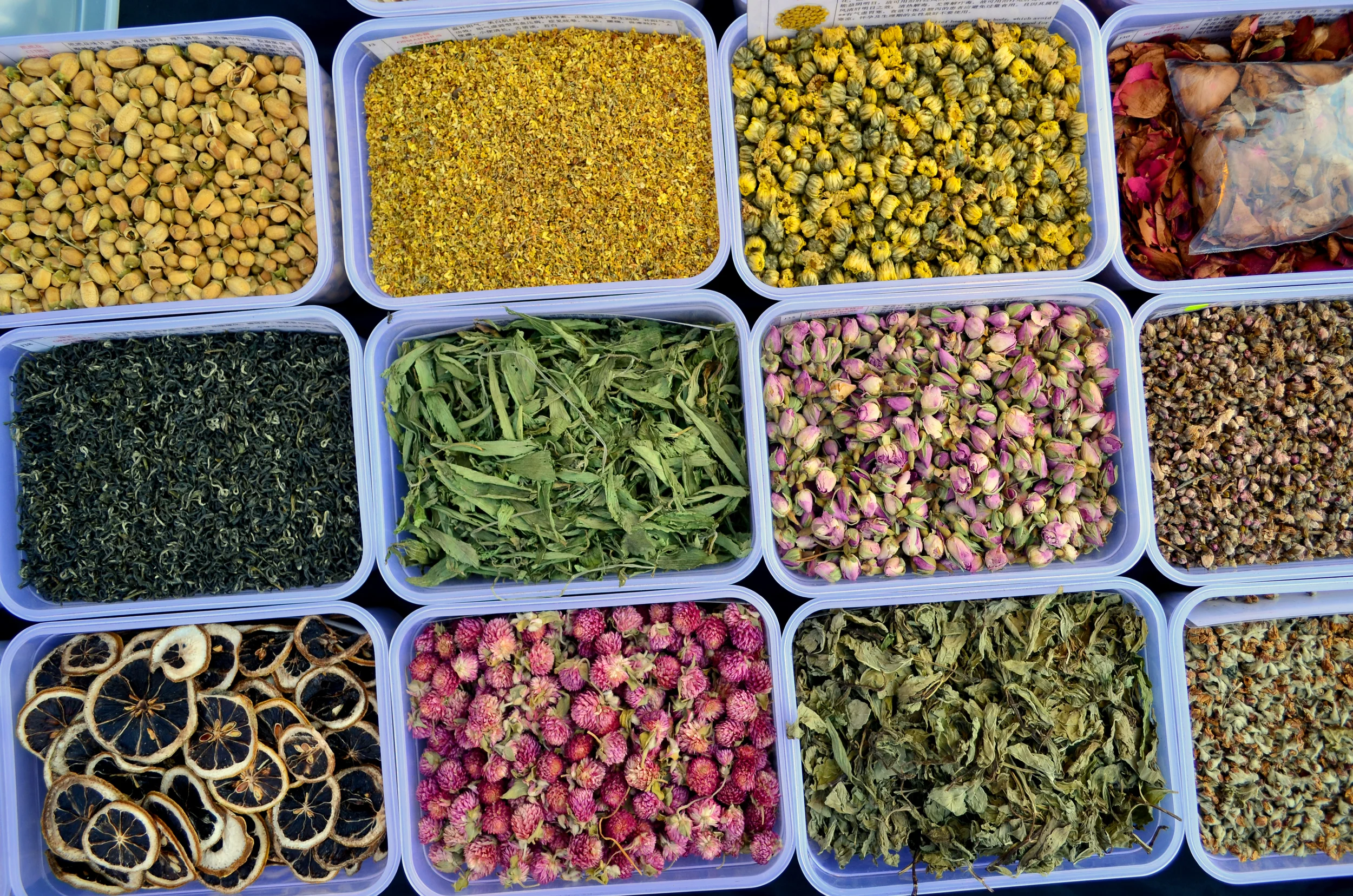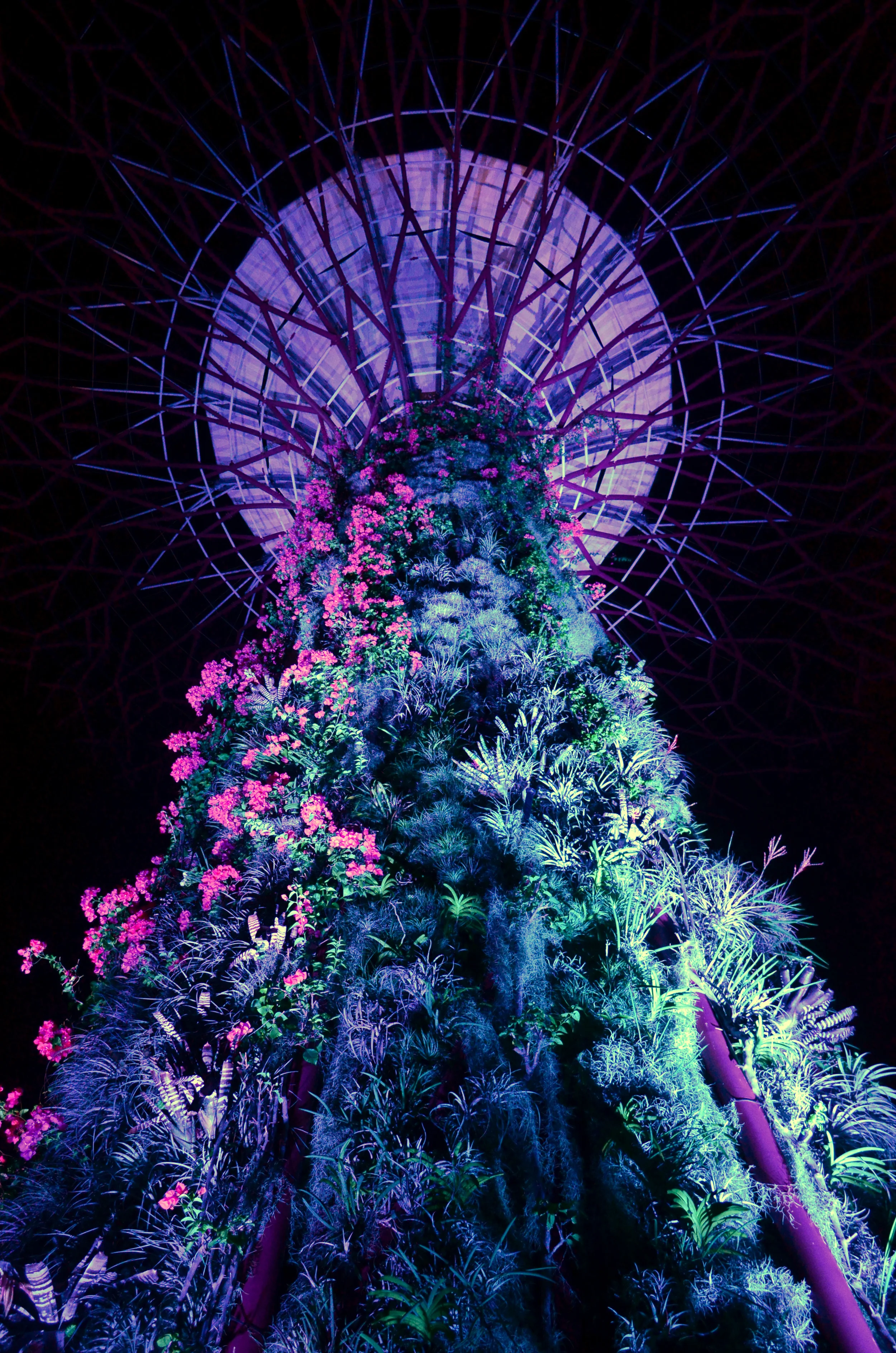Oh Nyonya Didn't
Melaka, Malaysia
Greatest Moment: We had a fun full day of eating and shopping. We had a romantic date with the town, going in between the small streets and admiring the Chinese and European influenced homes. The river that ran through this heritage city too gave us not only a wonderful aroma of fish, but it gave a beautiful walk alongside the street art as well. It was here that Kathy found her wonderful necklace, beaded by the Sabah tribe in Malaysian Borneo. Jamie found a beautiful shirt, modern in its cut, and encompassing of our trip with the words “Everything has Beauty” printed on it. We drank Teh Tarik and White Coffee, and ate local deserts and foods wrapped in banana leaves. It was the perfect way to end a perfect trip in our beloved Malaysia.
Worst Moment: The beautiful and terrible thing about traveling is the constant unknown. How are we getting to Singapore tomorrow? Where will we stay? Should we book our flight to Indonesia now, or wait to see if we want to extend our stay in Singapore longer than expected?
Questions like these are so tiresome and happen on a daily basis. We spend more time than we would both like to researching cheap ways to get to our next destination, with less travel time, and book the hotel for 2-3 nights initially. If we love the place we are staying, we will extend our stay, which makes it very hard to plan beyond 3 days on average.
Lesson Learned: It is so interesting to understand the culture surrounding the architecture here! A significant amount of interaction happened between the architecture and the belief systems in this region. Beliefs were often used as the main principle in building a structure. There are three elements of beliefs adopted in the architecture: the physical, the prediction, and the rituals. All these elements are said to be the determinant of good or bad luck for the building and its occupants.
The ritual of selecting a place to build a house in the Malaysian Community:
- Burn incense by shaman (or medicine man) around construction site
- One female family member is required to measure a wood and rattan to the length that is the stretch of her hands
- Burn incense once again
- The wood and rattan will then be planted in the middle of the site. Then, they will set a pail filled with water and a dish plate beside it, reading prayers and incantations by the men and women.
- At dusk the next day, the same female with measure both the wood and rattan again, and the water level in the pail will be examined. If the rattan was elongated during the past night or the water overflowed into the dish plate, the site will be selected to build a home.
- The main pillar of the house will be where the rattan was originally placed.
Cultural Insight: We had an AMAZING meal at Amy’s Nyonya Heritage Restaurant. We learned a great deal also about a new cuisine. Nyonya cuisine is a fusion of Chinese cooking with Malay, Indonesian, Indian, Portuguese, and English influence. The nyonyas and babas (female and male) have a culture derived from their ancestors, which comprised of early Chinese who settled primarily in Melaka. These settlers assimilated with the local Malaysian people, adopting their customs, dressing, and cooking styles. From that, the descendants today are the nyonya and babas. They uphold the stylized cooking and attire that was so unique to their ancestors, and are known with being very particular with cleanliness and distinction while preparing food.
FOOD AND ART OF MELAKA


